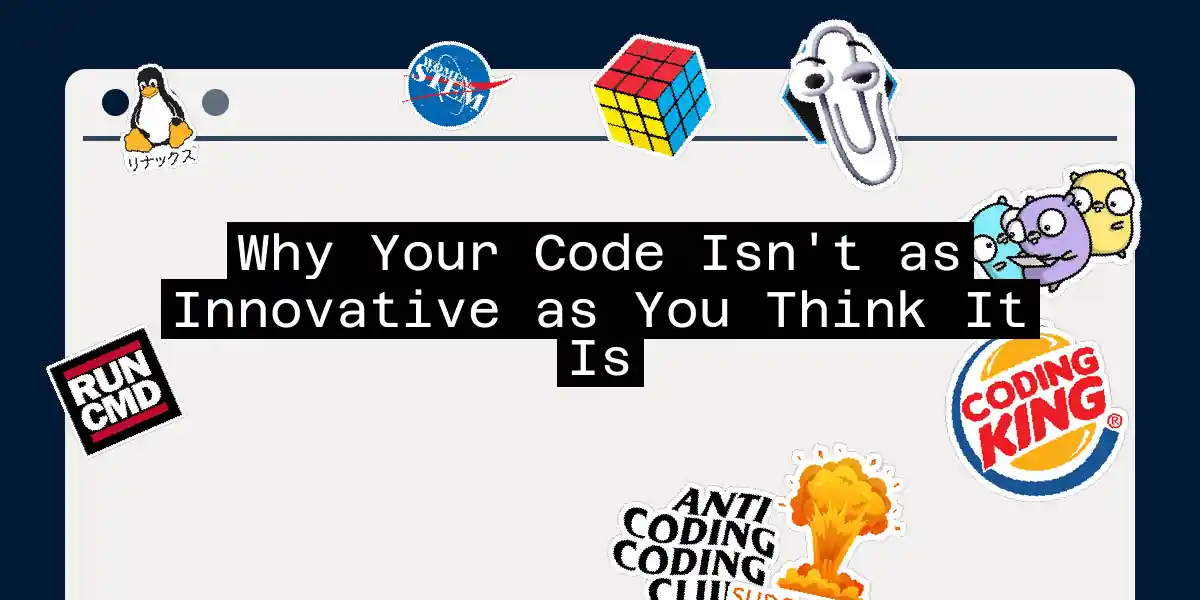The Illusion of Innovation
In the world of software development, innovation is often touted as the holy grail. We strive to create something new, something groundbreaking, something that changes the game. But let’s face it: most of the time, our code isn’t as innovative as we think it is. Why? Because we’re often stuck in a cycle of repetition, leveraging existing frameworks and libraries without truly pushing the boundaries.
The Comfort Zone of Frameworks
Modern software development frameworks have made our lives easier, but they’ve also made us complacent. We rely heavily on these frameworks to do the heavy lifting, which means we’re not always forced to think outside the box. For instance, when you’re building an application, you might use a framework that handles everything from authentication to data visualization. While this speeds up development, it also means you’re not necessarily creating something new; you’re just assembling pieces that already exist.
The Less Code, More Innovation Paradox
The “less is more” metaphor in software development suggests that fewer lines of code can lead to better maintainability and fewer complexities. However, this doesn’t necessarily translate to innovation. When you’re working with minimal code, you’re often constrained by the limitations of the frameworks and libraries you’re using. This can stifle creativity and prevent you from exploring truly novel solutions.
The Example of Legacy Code
Imagine working on a legacy codebase with over a million lines of code. This isn’t just a nightmare to maintain; it’s also a barrier to innovation. The sheer complexity of such a codebase makes it difficult to introduce new features or improve performance without causing unintended consequences. In such cases, the effort to innovate is often overshadowed by the need to simply keep the system running.
The Creative Aspect of Programming
Programming is often seen as a logical, methodical process, but it does require creativity. The difference lies in how we perceive creativity. For many, creativity is about creating something entirely new, but in programming, it’s more about finding innovative solutions to existing problems. This involves thinking creatively about how to assemble code, how to solve complex issues, and how to optimize performance.
The Art of Problem-Solving
A programmer with a fine arts background might see parallels between painting and coding. Both involve planning, visual flow, and improvisation. The blank canvas of a painting is akin to the blank screen of a code editor. Both require creative thinking to bring the vision to life. However, this creativity is often overlooked because it’s embedded within the logical structure of code.
Practical Tips for Boosting Innovation
So, how do you break out of the cycle and make your code truly innovative? Here are a few practical tips:
- Challenge Frameworks: Don’t just use frameworks because they’re easy. Challenge yourself to build something from scratch or to modify existing frameworks in innovative ways.
- Experiment and Fail: Innovation often comes from experimentation. Don’t be afraid to try new things and fail. It’s through these failures that you learn and grow.
- Collaborate: Working with others can bring diverse perspectives and ideas. Collaborate with developers from different backgrounds to stimulate creative thinking.
- Learn from Other Disciplines: Drawing inspiration from other fields like art, science, or engineering can help you approach problems in unique ways.
Conclusion
Innovation in coding isn’t just about writing new lines of code; it’s about thinking differently, challenging the status quo, and pushing the boundaries of what’s possible. By recognizing the limitations of our current practices and actively seeking out new ways to solve problems, we can create truly innovative software. So, the next time you’re coding, remember: the real innovation lies not in the code itself, but in the creative thinking that goes into it.
